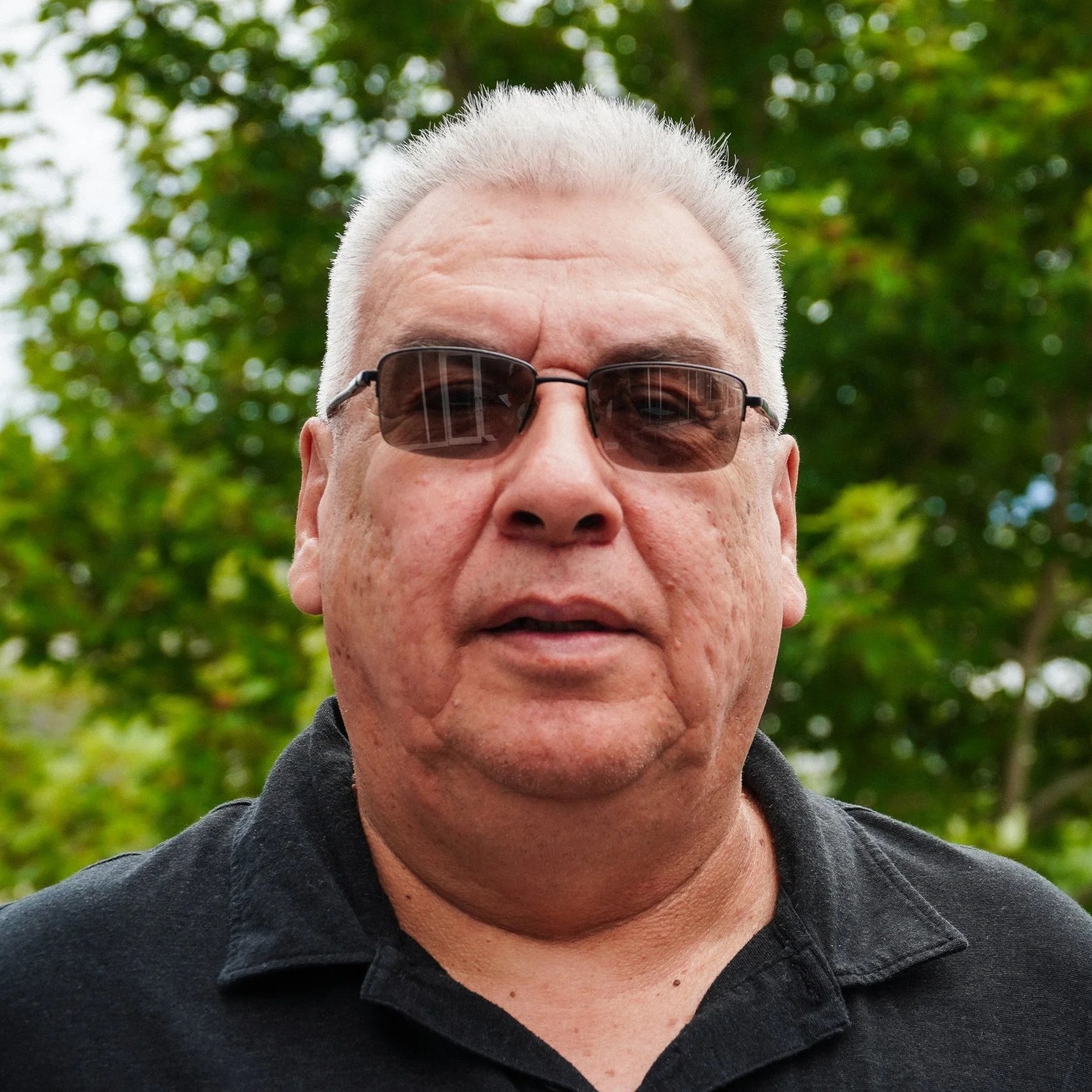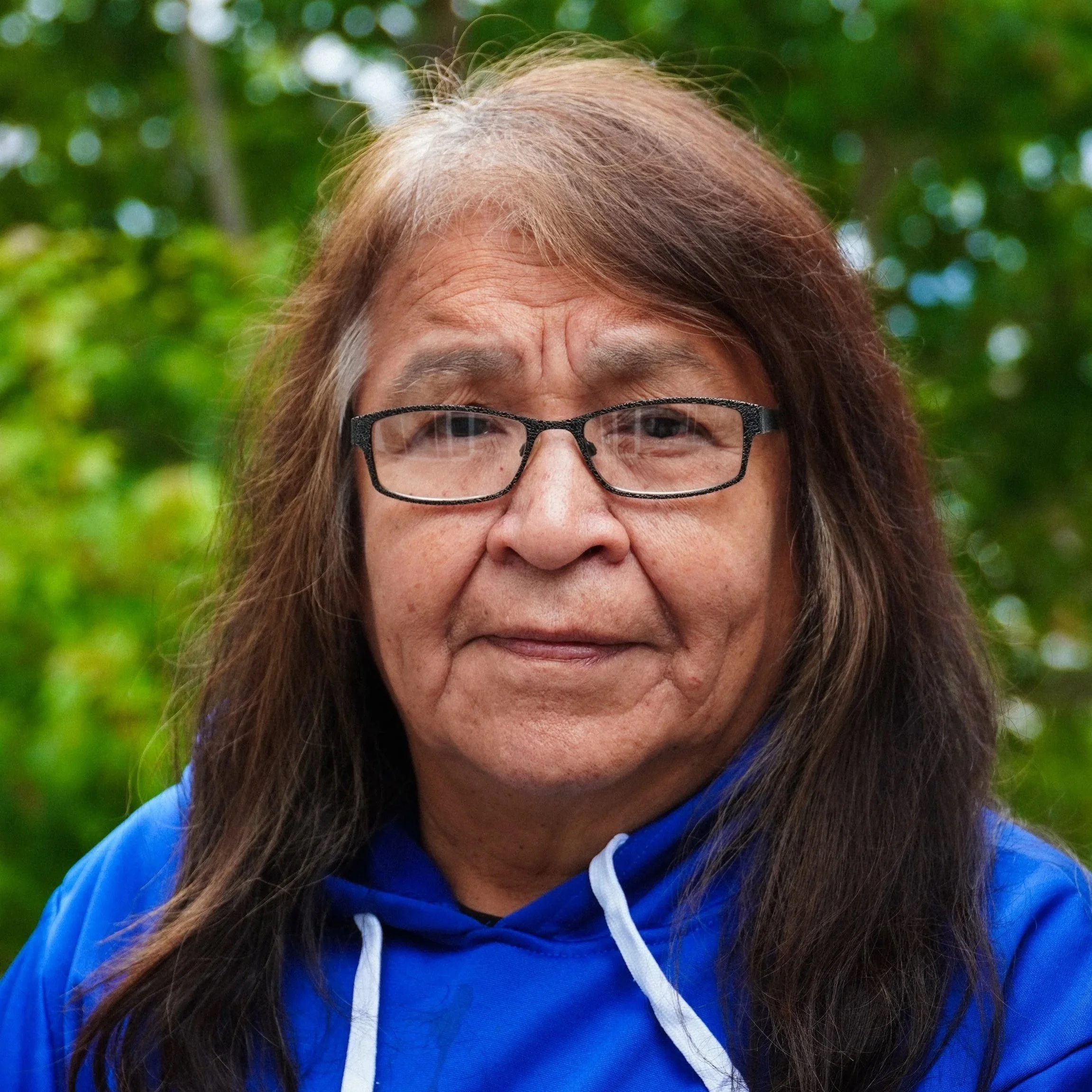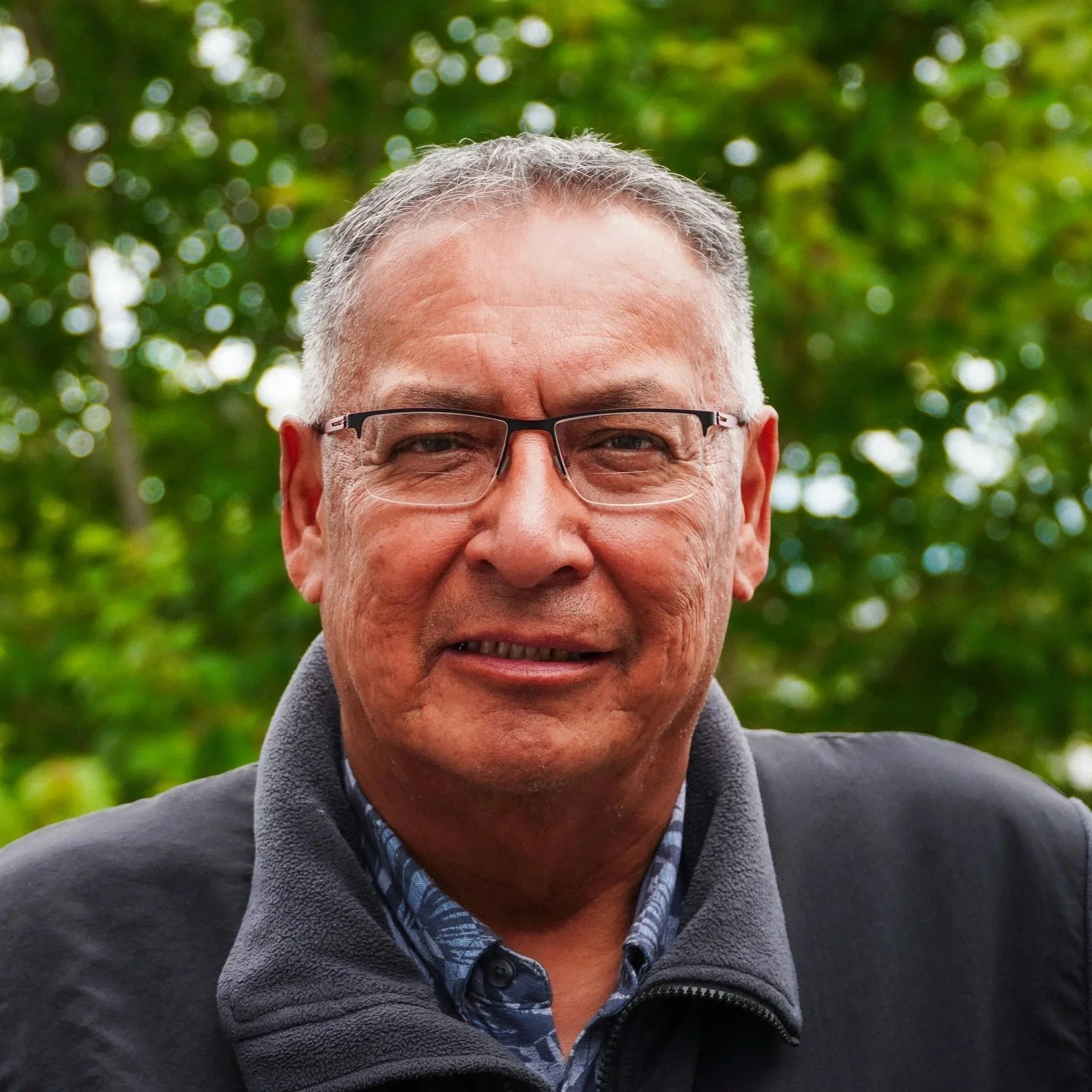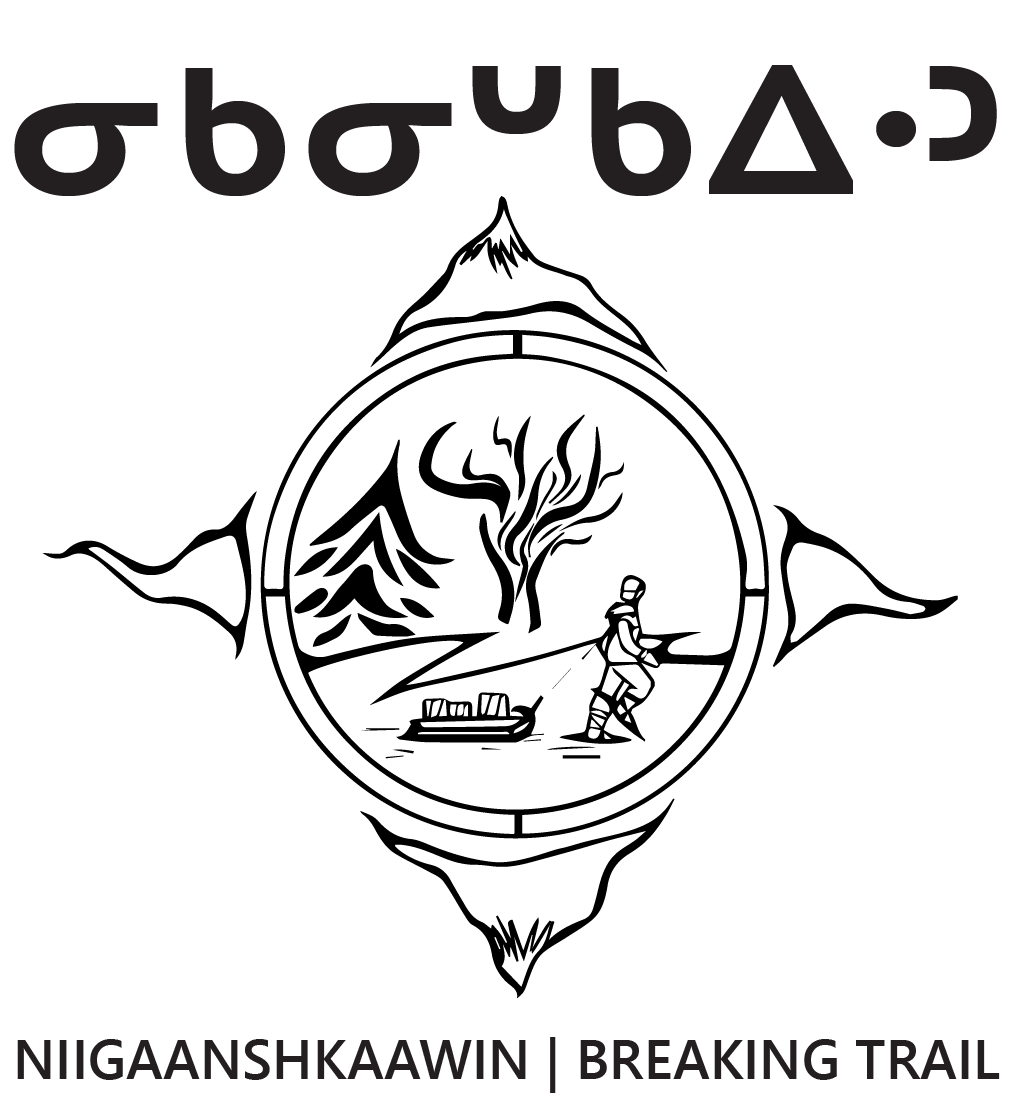
About Niigaanshkaawin
What is Niigaanshkaawin?
Niigaanshkaawin, which means “walking ahead or first to walk ahead” aptly describes the goal to have Tikinagan Child and Family Services and its 30 First Nations break trail on a proactive path to support and integrate First Nation (Band) Representative programs and First Nation law making. A resolution was passed at the 2021 Tikinagan Annual Chiefs’ Assembly to form a new Chiefs Committee to oversee a process to determine the role of the agency in the future with wide-ranging changes in the child welfare landscape.
“We chose the name Niigaanshkaawin because Tikinagan has always led the way,” explained Tikinagan Executive Director Thelma Morris. “I have always said we are two-steps ahead of everyone in Ontario. This can be the base for child welfare laws in Ontario. My dream is for each First Nation to have their own child welfare laws.”
The Niigaanshkaawin Chiefs Committee continues to consult with community members and leaders to determine the specific role communities want the agency to fill. These consultations will allow Tikinagan to prepare to support in whatever way each community sees fit.
About Niigaanshkaawin
-
To see each First Nation determine their path for child and family services.
-
To support our First Nations in the development and implementation of First Nation representation programs and First Nation child welfare laws.
-
To reimagine the role Tikinagan will have in supporting our First Nations' child and family services.
ᐅᑎᐸᒋᒧᐃᐧᓂᐊᐧ ᐅᑭᒪᑲᓇᐠ ᑲᐊᐱᑕᒪᑫᐊᐧᐨ
An Introduction from the Chiefs Committee
Our return to fully embracing this way of living is only a few steps behind us, and as a Chiefs Committee, we are determined to go back to reclaim what we was removed from us by carving out a new path. We want to walk ahead for the benefit of our future generations. As Chiefs, we have dreamt of having child and family services in our communities that would deliver services respectful of the culture and customs of the Indigenous people.
ᐅᑭᒪᑲᓂ ᐊᐱᑕᒪᑫᐃᐧᐣ
Niigaanshkaawin Chiefs Committee
-

Kitchenuhmaykoosib Inninuwug
ᐅᑭᒪᑲᐣ ᑕᐧᓂ ᒪᐧᕑᐃᐡ
Chief Donny Morris -

Slate Falls First Nation
ᐅᑭᒪᑲᐣ ᓫᐅᕑᐁᐣ ᑭᕑᐁᐣ
Chief Lorraine Crane -

Lac Seul First Nation
ᐅᑭᒪᑲᐣ ᑭᕑᐃᐸᕑᐟ ᐳᓫ
Chief Clifford Bull -

Keewaywin First Nation
Former Chief Chris Kakegamic
-

Aroland First Nation
ᐅᑭᒪᑲᐣ ᓴᓂ ᑲᐣᔭᐣ
Chief Sonny Gagnon -

Eabametoong First Nation
ᐅᓇᔓᐁᐧᐃᐧᓂ ᕑᐅᐃᐧ ᔓᑲᕑᐦᐁᐟ
Councilor Louie Sugarhead -
Sandy Lake First Nation
ᐅᑭᒪᑲᐣ ᑎᓫᐅᕑᐃᐡ ᑲᑭᑲᒥᐠ
Chief Delores Kakegamic
At just 11-years-old, Robin had her first interaction with child welfare. “This was the first time in my life I felt unsafe and in harm,” Robin recalled. “It was scary. I recall thinking that I never want a child to feel this way.”
That mindset began a long career in child welfare, starting by answering phones for Ojibway Tribal and Family Services in 1998-1999. Robin continued to garner experience and knowledge with 12 years in frontline services with child and family service agencies in Ontario. She has travelled widely among First Nations across Northern Ontario learning about each community’s healing traditions. She brings extensive experience with First Nation children, youth and families, and First Nation leadership navigating the child welfare system and representation in legal proceedings.
In 2013, she moved back to Constance Lake First Nation where she became a leader for her people, serving two terms as Band Councillor. After declining a nomination for Chief, Robin decided she wanted to help bring change to the systems in our communities. Knowing everything has an impact on the way we care for our children and youth in need. Stepping back, she saw that to make change we needed to revitalize our own ways and govern ourselves.
"Although we have reached and advocated for a law to have authority in child welfare, there is so much work that needs to be done, it may take years to come. We have lived in these systems for so long, we have lived with colonization for so long, we need to acknowledge this pain and heal from this while taking the steps towards the options set out in Bill C-92. To achieve this, it will take collaboration from everyone in our communities. Now is our time to revitalize our way as First Nations peoples. Our children today are proving to us that life is getting better because they want better. They are voicing it. Let's work together and make it happen."
Niigaanshkaawin
Project Manager
ᕑᐊᐧᐱᐣ ᐸᐣᑎᐣᐠ
Robin Bunting
ᐅᐱᔑᑯᑲᐣᐠ ᐃᐡᑯᓂᑲᐣ, ᑲᐧᐣᐡᑕᐣᐡ ᓫᐁᐠ ᐃᐡᑯᓂᑲᐣ
Lac Seul First Nation
Constance Lake First Nation
FAQs
-
Niigaanshkaawin was developed to honour the original vision of those who came before us. With the support of the Bill C-92 Act and its objectives, Niigaanshkaawin gives the opportunity for First Nations to develop and govern their own child welfare laws.
-
At the Tikinagan Annual Chiefs Assembly held virtually October 2021, Tikinagan Executive Director, Thelma Morris presented on a proposal called Niigaanshkaawin. The name, which means “walking ahead or first to walk ahead,” aptly describes the goal to have Tikinagan break trail on a new, proactive path to support and integrate Band Representative programs and First Nation law making. At the Assembly a resolution was passed to form a new Chiefs Committee to oversee a process to determine the role of the agency in the future with wide-ranging changes in the child welfare landscape.
“We chose the name Niigaanshkaawin because Tikinagan has always led the way,” explained Morris. “I have always said we are two-steps ahead of everyone in Ontario. This can be the base for child welfare laws in Ontario. My dream is for each First Nation to have their own child welfare laws.”
-
Niigaanshkaawin – Breaking Trail is an initiative that has its purpose: to support First Nation affiliates of Tikinagan Child and Family Services in the development of Band Representative programs, implementation of child welfare laws, and to reimagine the role Tikinagan will have in the future.
-
Co-developed with Indigenous, provincial and territorial partners, the act:
affirms the rights of First Nations, Inuit and Métis peoples to exercise jurisdiction over child and family services
establishes national principles such as the best interests of the child, cultural continuity and substantive equality
contributes to the implementation of the United Nations Declaration on the Rights of Indigenous Peoples
provides an opportunity for Indigenous peoples to choose their own solutions for their children and families
On June 21, 2019, the Act respecting First Nations, Inuit and Métis children, youth and families became an official law, and on January 1, 2020, its provisions came into force.
Indigenous groups who wish to do so can design and deliver child and family services solutions that best suit their needs. Just as the act was co-developed with our partners, we will continue to work with them through the transition and implementation phases of the act.
As of January 1, 2020:
Indigenous groups who have developed their own legislation will have 2 options to exercise jurisdiction under the act.
Every service provider delivering child and family services to Indigenous children and families will need to follow the minimum standards found in the act.
Existing agencies will continue to provide services to Indigenous children.
Agreements related to existing delegated agencies will remain valid unless the parties decide otherwise.
If Indigenous groups are currently at discussion tables to conclude agreements, they can still exercise jurisdiction under the framework of the act.
Indigenous groups that choose to exercise their jurisdiction could continue working with delegated agencies or could create their own delivery service models.
The act provides that agreements such as treaties and self-government agreements in relation to child and family services between Indigenous groups and federal, provincial, or territorial governments that predate the coming-into-force of the act prevail in case of conflict.
To facilitate the work of those providing child and family services, information will be posted on the Indigenous Services Canada (ISC) website related to notices of intent, coordination agreements and Indigenous laws as they are made available: Notices and requests related to An Act respecting First Nations, Inuit and Métis children, youth and families.
-
Tikinagan will continue to assist our communities and partner with them to ensure ongoing services to children, youth and families. We are committed to supporting and assisting all communities who are exploring and/or working on developing their own child welfare laws and delivery of services to their members wherever they reside.
-
Over the past four decades, Tikinagan has developed a unique service delivery model. The vision, goal and principles established by the Chiefs for Tikinagan have been fully integrated with Indigenous values and service delivery policies and procedures. Mamow Obiki-ahwahsoowin is a unique service model which means “everyone working together to raise our children." It is a system of protecting and caring for children and supporting families that has been designed and is delivered by First Nations people. This is a community-based approach to the inherent jurisdiction of First Nations based on traditional customary care practices.
-
Learn more about our supports for First Nations here.
-
Weagamow First Nation youth artist and Noodawishinaam Oshkiniigiwag (Hear Us Youth) member, Memekwe Apetawakeesic (Morriseau) drew the Niigaanshkawin project’s logo based on a childhood memory.
“When me and my family go woodcutting, my dad is often the first one to make a trail, so that’s what ‘Breaking Trail’ is for me,” explained Memekwe, 16.
“I’m proud of this logo, and I think it’s important that First Nation children learn about their own culture and traditions. I like the way that it represents how Anishinabe people are moving forward.”
The image, which took Memekwe about an hour to complete, was sketched on paper, then digitalized on her iPad.

Over 30 years prior to this legislation and the Truth and Reconciliation Calls to Action, Chiefs in our communities dreamt of having a child and family services agency that would deliver services respectful of the culture and customs of the Indigenous people. With the development of Mamow Obiki-ahwahsoowin service model in the last 20 years, we at Tikinagan have been able to work alongside First Nations to practise their inherent rights in making key decisions around care and provision of services to families in child welfare service.
Thelma Morris, Tikinagan Child & Family Services Executive Director



